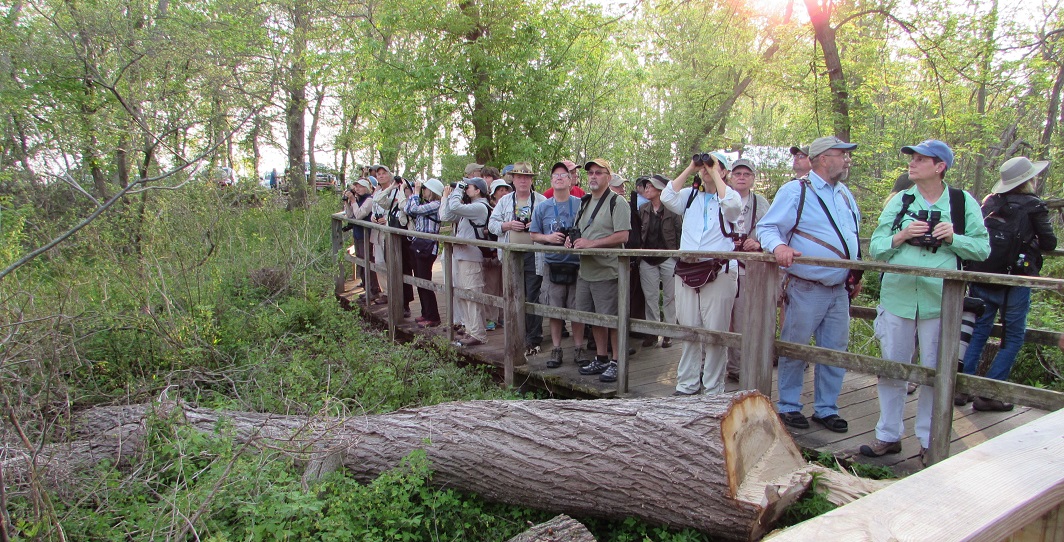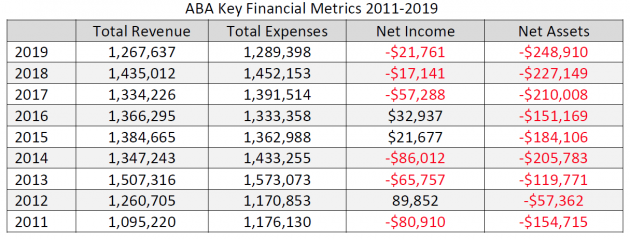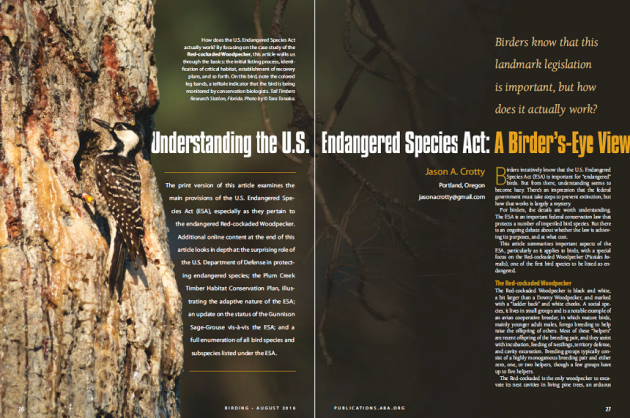
Jeff Gordon resigned as president of the American Birding Association, effective November 30, 2021. A week later, on December 7, 2021, the ABA got around to making an announcement on its website.
As far as I can tell, this announcement was not posted on any of the ABA Facebook pages and the only mention in the ABA Twitter feed is a retweet of Jeff Gordon’s tweet from his personal account. This strikes me as a puzzling communication strategy for an important issue.
The announcement states that “Julie Davis, Chair of the Board, is acting as interim president while the Board prepares to begin the search for the next ABA president.” This suggests that this news was unexpected and/or that the ABA did not have a secession plan.
A quick tour of the ABA website reveals other issues. For example, the financial statements have not been updated since 2018, nor have the annual meeting minutes. The last full audit seems to have been in 2017 and the independent auditor’s report is alarming (emphasis added): “The accompanying financial statements have been prepared assuming that the Association will continue as a going concern. [T]he Association had suffered net losses and has a net deficiency in net assets that raise substantial doubt as its ability to continue as a going concern.”
I am not an accountant, but “substantial doubt” as to the ABA continuing as “going concern” strikes me as a very significant problem. Moreover, the most recent tax form I have been able to locate, from 2019, seems indicate that the net assets deficit has actually increased, not decreased. Even with the auditor’s warning, it appears the ABA ran annual operating deficits in 2017, 2018, and 2019. Some recent key financial metrics are below (source).

Perhaps these financial issues have been resolved, but that is impossible to tell from the website or any other ABA communication. The ABA does not issue annual reports, nor could I locate a strategic plan, making the ABA’s financial position opaque to members.
In my view, the ABA faces other questions too, including its role in today’s birding community. As I wrote in 2019, the informational shortages that prompted the creation of the ABA no longer exist. If anything, birders confront too much information rather than not enough. There are countless field guides and other birding books, websites, blogs, tour companies, and podcasts. Listing has largely shifted to eBird, which now plays a central role in birding. Simply put, birding is fundamentally different than it was 50 years ago.
The ABA’s mission statement is vague: “The American Birding Association inspires all people to enjoy and protect wild birds.” The more specific aspects do not add much detail: “The American Birding Association represents the North American birding community and supports birders through publications, conferences, workshops, tours, partnerships, and networks. The ABA’s education programs promote birding skills, ornithological knowledge, and the development of a conservation ethic. The ABA encourages birders to apply their skills to help conserve birds and their habitats, and we represent the interests of birders in planning and legislative arenas.”
This is a rather scattershot collection of aspirations, some of which are addressed by other, larger non-profits (e.g., conservation and education, the focus of the Cornell Lab of Ornithology, the National Audubon Society, and American Bird Conservancy). Some tasks appear to be performed inconsistently or not at all (e.g., “represent the interests of birders in planning and legislative arenas”).
The mission and the mission statement may need a makeover, particularly if the current activities exceed the financial capacity of the organization. Without a clear view of what the ABA is trying to do, it is difficult to evaluate how well it is doing it.
Whatever the reasons, it seems that most birders do not see the ABA as essential. With a membership of perhaps 15,000 (that is an estimate, as the numbers do not appear to be public), the ABA is a tiny percentage of North American birders.
The U.S. Fish and Wildlife service estimates that there are 16 million “active birders” in the United States, though that figure is likely orders of magnitude too high. But even if we take a more plausible figure of approximately 1 million, only a small fraction (about 1.5%) of birders are ABA members.
Indeed, even if you consider just eBird users (525,000 in the U.S. and 80,000 in Canada) as a rough proxy for active birders, only about 2.5% have joined the ABA.
In short, approximately 98% of North American birders are not ABA members, suggesting that birders view the ABA as not particularly relevant.

(That is essentially my view. I have long been an ABA member and I have contributed several articles to Birding and other ABA publications, including the one above. But other than flipping through Birding when it arrives in my mailbox, I have far more interaction with eBird and 10,000 Birds than with the ABA. Nevertheless, I believe there ought to be a group that represents birders, so I renew my membership every year.)
Given all of this, the Board of Directors should look at this job opening as an opportunity to re-assess the role of the ABA in the 2020s. Without a clear vision for the future, it seems difficult to search for, let alone hire, the right person.
Nevertheless, some criteria will obviously be important. In particular, if the ABA remains in serious financial peril, that issue must be resolved as the top priority. An organization under threat of financial collapse cannot be effective. The financial facts should also be communicated to members, as if the ABA faces an existential threat, that cannot be a secret.
The next executive director should have experience successfully managing a non-profit organization and creating and implementing budgets. Experience developing and executing a strategic plan seems essential as well, as are communication skills.
This personnel decision looks to be an important step for the future of ABA, and not something that should be done under the radar, without meaningful communications with membership.













This is a really insightful and long-needed piece. I’m a big supporter of the existence of the ABA, but the main reason birders need such an organization is for legislative representation. Search ‘hook and bullet club’ on this site, and you’ll see that I’ve been complaining about the exclusion of non-extractive wildlife enthusiasts (e.g. birders, hikers, and photographers) from the halls of power for a long time. Have we as a special-interest seen any progress towards representation? Shouldn’t THAT be the focus of the ABA?
Mike, I think that’s right. We have this issue locally at one of the NWRs, which is considering greater public access (only hunters now) and that seems like exactly the sort of thing the ABA should have a pre-prepared comment that could be submitted after some minor editing specific to that site. Access seems like something the ABA could advocate and it doesn’t seem like anyone else is doing it.
Here’s the local issue:
https://www.fws.gov/refuge/wapato_lake/what_we_do/pap/
The ABA financials and meeting minutes have now been updated on the ABA website:
https://www.aba.org/financial-statements-reports/
As a member, I am interested to know what happened to Jeff Gordon. As you note, it seems sudden or not planned out. Was he forced out? I don’t need gory details, but some kind of explanation of what the hell is going on and why they just swept this under the rug. I want to say “why they think they can just sweep this under the rug”, but they did and I guess with no blowback.
“He was great. We thrived. He is spending more time with his family now. And we will begin a search for a new leader.” What?!?